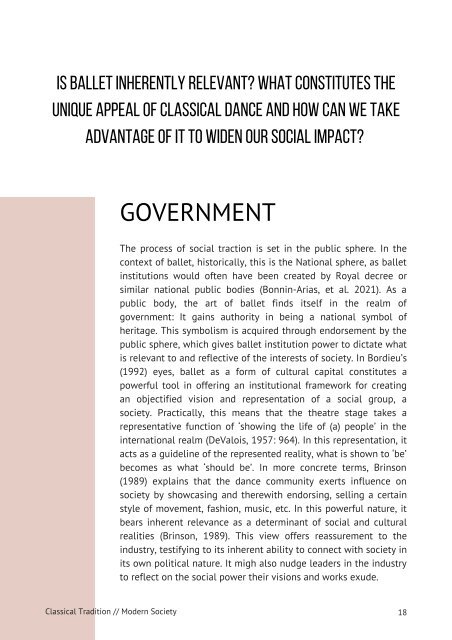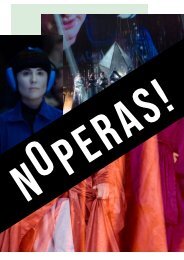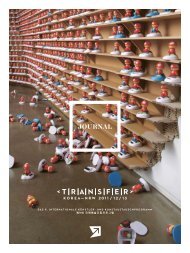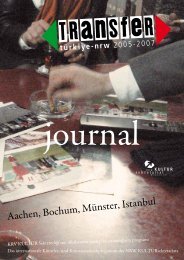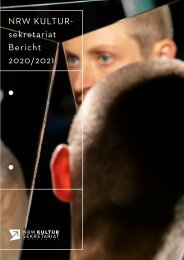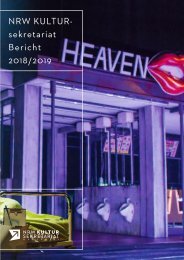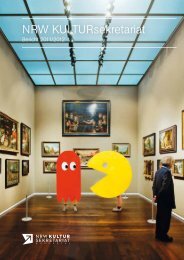Tanzrecherche NRW: Classical Tradition / Modern Society by Mirjam Otten
A handbook for creators and decision-makers on keeping classical ballet relevant
A handbook for creators and decision-makers on keeping classical ballet relevant
You also want an ePaper? Increase the reach of your titles
YUMPU automatically turns print PDFs into web optimized ePapers that Google loves.
Is ballet inherently} relevant?ć What constitutes the<br />
unique appeal of classical dance and howw can wwe take<br />
advantage of it to wwiden our social impact?ć<br />
GOVERNMENT<br />
The process of social traction is set in the public sphere. In the<br />
context of ballet, historically, this is the National sphere, as ballet<br />
institutions would often have been created <strong>by</strong> Royal decree or<br />
similar national public bodies (Bonnin-Arias, et al. 2021). As a<br />
public body, the art of ballet finds itself in the realm of<br />
government: It gains authority in being a national symbol of<br />
heritage. This symbolism is acquired through endorsement <strong>by</strong> the<br />
public sphere, which gives ballet institution power to dictate what<br />
is relevant to and reflective of the interests of society. In Bordieu’s<br />
(1992) eyes, ballet as a form of cultural capital constitutes a<br />
powerful tool in offering an institutional framework for creating<br />
an objectified vision and representation of a social group, a<br />
society. Practically, this means that the theatre stage takes a<br />
representative function of ‘showing the life of (a) people’ in the<br />
international realm (DeValois, 1957: 964). In this representation, it<br />
acts as a guideline of the represented reality, what is shown to ‘be’<br />
becomes as what ‘should be’. In more concrete terms, Brinson<br />
(1989) explains that the dance community exerts influence on<br />
society <strong>by</strong> showcasing and therewith endorsing, selling a certain<br />
style of movement, fashion, music, etc. In this powerful nature, it<br />
bears inherent relevance as a determinant of social and cultural<br />
realities (Brinson, 1989). This view offers reassurement to the<br />
industry, testifying to its inherent ability to connect with society in<br />
its own political nature. It migh also nudge leaders in the industry<br />
to reflect on the social power their visions and works exude.<br />
<strong>Classical</strong> <strong>Tradition</strong> // <strong>Modern</strong> <strong>Society</strong> 18


